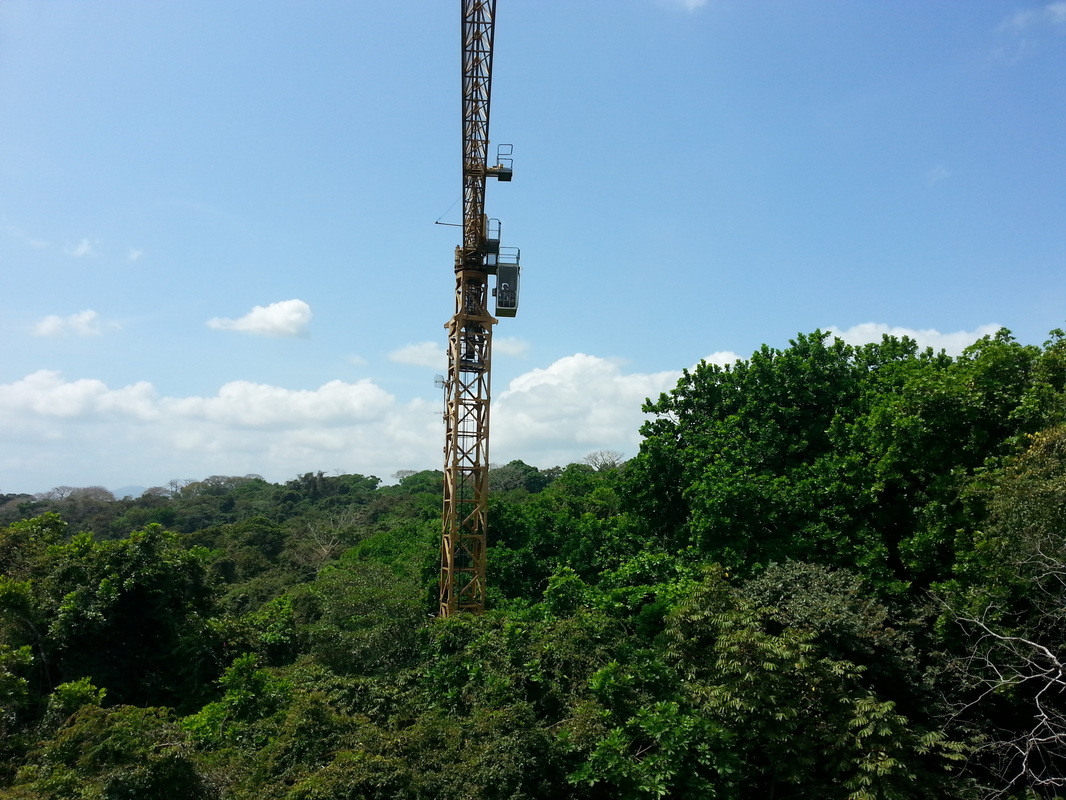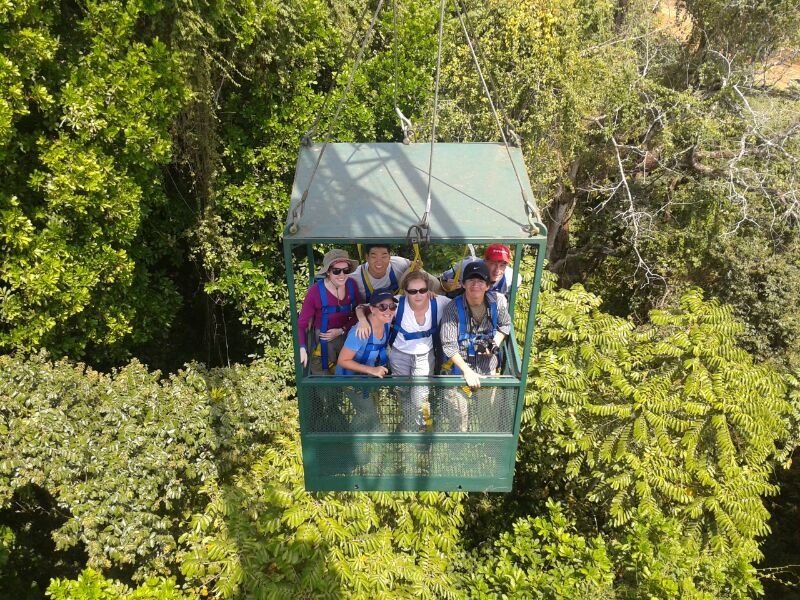|
Since returning to Panama, I’ve been busy helping out with Princeton University’s Panama Field Study Semester – a 4-month long intensive field program that provides 3rd and 4th year undergraduate biology students with an introduction to tropical ecology. Along with Prof. Yves Basset (STRI/University of Panama) and co-TA Ioana Chiver, I’ve been accompanying the students on field trips across central Panama. On one our first days, we visited Parque Nacional Altos de Campana – 4,925 ha national park located about 1 hour West of Panama City. Created in 1966, this is Panama’s oldest national park, and contains a beautiful cloud forest, as well as spectacular views of the Pacific coastline. Our students (12 Americans, 2 El Salvadorians and 1 Panamanian) have been developing independent research projects on a variety of topics in the 3 forests that we are working in: Parque Nacional Sobernia (a lowland wet evergreen forest near the Panama canal), Parque Metropolitano (a lowland semi-deciduous forest near Panama City), and San Lorenzo (a lowland wet evergreen forest near the Carribbean coast). One of the highlights of our field days so far has been the opportunity to use STRI’s research crane located in Parque Metropolitano. This modified construction crane allows researchers to access the upper canopy of tropical rainforests (40 – 50m above the forest floor) and study the organisms that live in this fascinating, but hard-to-reach habitat. A short video showing the change in light conditions and vegetation as we descend from the upper canopy (45m) to the forest floor in the canopy crane at Parque Metropolitano. Credit: D. Sharpe.
28 Comments
|




 RSS Feed
RSS Feed
